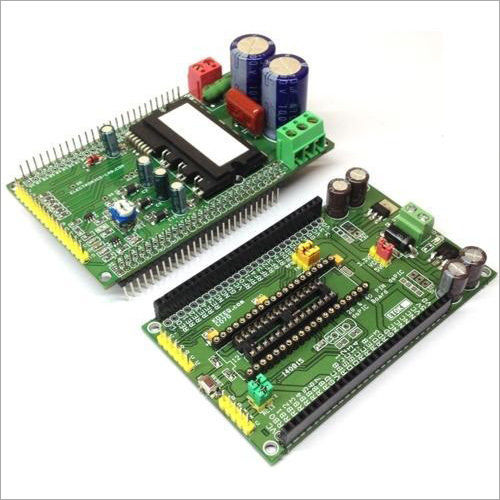- Home Page
- Company Profile
- Our Products
- Contact Us
Thyristor Controlled Power Module
Product Details:
- Power Supply Electric
- Usage Industrial
- Supply Voltage 220-480 Volt (v)
- Color Green
- Warranty Yes
- Click to View more
X
Thyristor Controlled Power Module Price and Quantity
- 1
Thyristor Controlled Power Module Specification
- Yes
- Industrial
- Green
- Electric
- 220-480 Volt (v)
Thyristor Controlled Power Module Trade Information
- 1 Week
Product Description
Thyristor Controlled Power Module is an integrated electronic circuit board fabricated by using top-quality electronic and semiconductor components. It is designed for electrically powered heating units such as industrial boilers, gas burners, and other machines for their efficient and controlled functioning. It is capable to function at variable voltages and is also provided with safety components to prevent damages due to power fluctuations. It is designed by our company is provided with pin-type connectors to easily connect it to a power source. Get this energy-efficient controller board in large quantities as per your requirements at a low price.
Thyristor Controlled Power Module Specifications:
1. Mounting Type: Surface
2. Repetitive Peak Reverse Voltage: 220 - 480 V
3. Surge Current Rating: 10-20 A
4. Phase: 1, 3
5. Material: Bakelite and Copper
6. Power Source: Electric
7. Frequency: 50 - 60 Hz
FAQ:
Q1: What is a Thyristor Controlled Power Module (TCPM)?
Ans: A Thyristor Controlled Power Module, often referred to as a TCPM, is an electronic device that uses thyristors (also known as silicon-controlled rectifiers or SCR) to control the power flow in an electrical circuit. It is designed to regulate the output voltage or current by adjusting the firing angle of the thyristors.
Q2: How does a TCPM work?
Ans: A TCPM works by controlling the conduction of thyristors in response to a control signal. The thyristors allow current to flow in only one direction, and their firing angle determines when the current starts flowing. By adjusting this firing angle, the effective power delivered to a load (such as a motor or a heater) can be controlled, enabling smooth regulation of the output.
Q3: What are the applications of TCPMs?
Ans: TCPMs are commonly used in various industrial and commercial applications where precise control of power output is required. Some common applications include motor speed control, heating elements regulation, voltage regulation in power systems, and controlling various types of resistive or inductive loads.
Q4: What are the advantages of using TCPMs?
Ans: TCPMs offer several advantages, including:
a. Precise control of power output.
b. High efficiency due to thyristors' ability to switch rapidly.
c. Reduced wear and tear on mechanical components in motors due to smooth speed control.
d. Reduced power line disturbances and harmonics due to controlled switching.
Q5: Are there any limitations to TCPMs?
Ans: Yes, there are some limitations:
a. Thyristors only control one half-cycle of an AC waveform, which can lead to distortion in the output waveform.
b. They are not suitable for applications that require bidirectional power flow control.
c. High switching frequencies can lead to increased switching losses and reduced efficiency.
Q6: How is a TCPM controlled?
Ans: A TCPM is typically controlled using a control signal that determines the firing angle of the thyristors. This control signal is generated based on the desired output voltage or current. Advanced control techniques like pulse-width modulation (PWM) can be used to achieve smoother and more accurate control.
Q7: What safety measures are needed when using TCPMs?
Ans: Safety measures include:
a. Proper grounding and insulation to prevent electrical shocks.
b. Overcurrent and overvoltage protection to prevent damage to the module and connected equipment.
c. Thermal protection to prevent overheating.
d. Adequate ventilation and cooling for dissipating heat generated during operation.
Q8: How do TCPMs differ from other power control methods?
Ans: TCPMs are distinct from other power control methods like phase control or on/off switching. TCPMs allow for smooth and continuous control of power output, unlike simple on/off methods. They provide better efficiency and reduced harmonics compared to phase control methods.
Q9: Can TCPMs be integrated into automated systems?
Ans: Yes, TCPMs can be integrated into automated systems through digital control interfaces. This enables remote control, programming, and coordination with other system components.
Q10: Where can I find TCPMs?
Ans: TCPMs are available from various manufacturers and suppliers specializing in power electronics and industrial control equipment. They come in different power ratings and configurations to suit different applications.
Enter Buying Requirement Details




